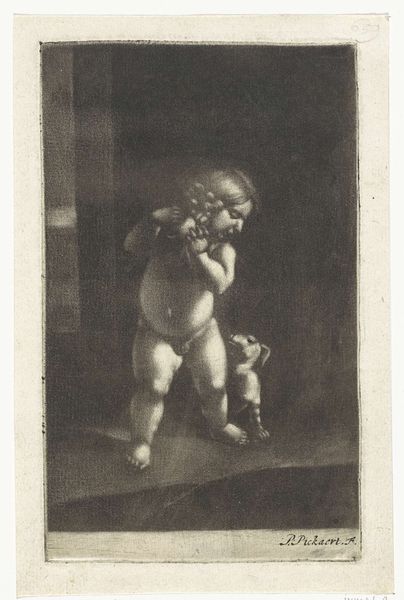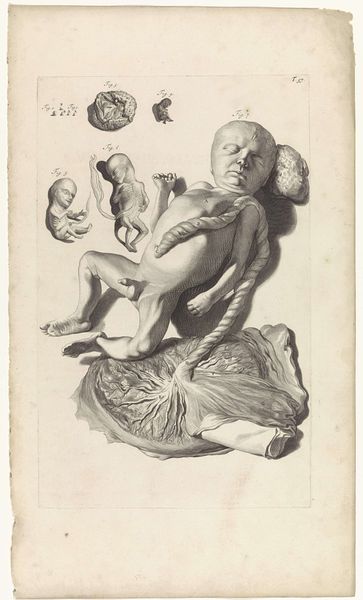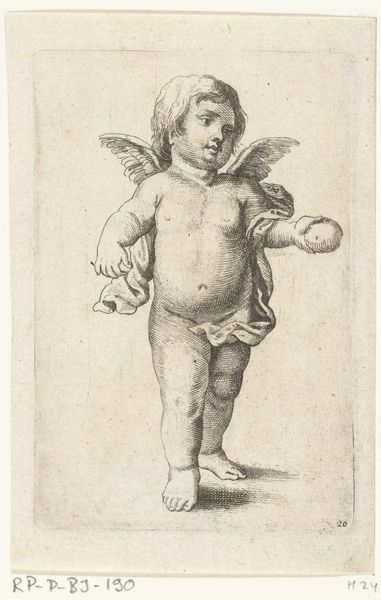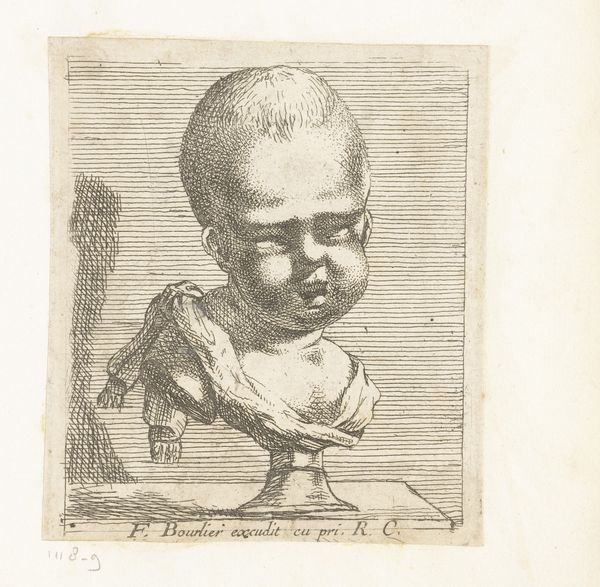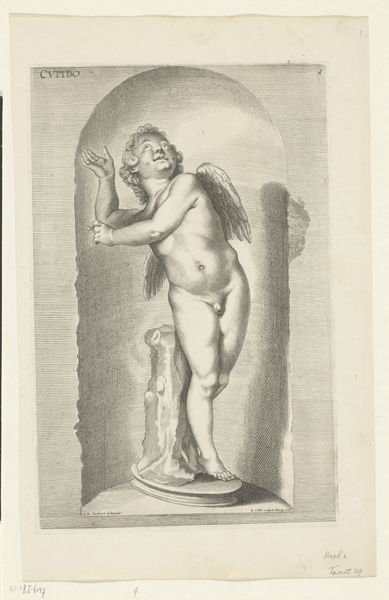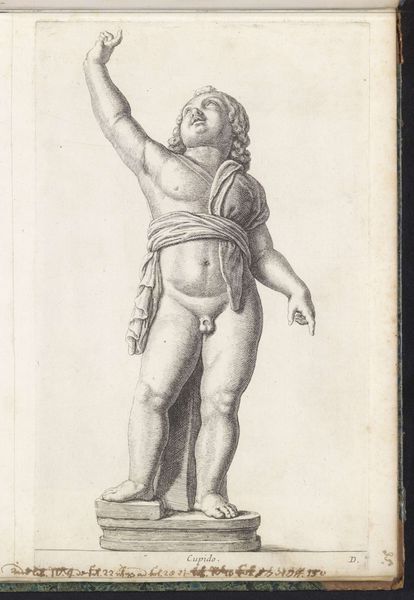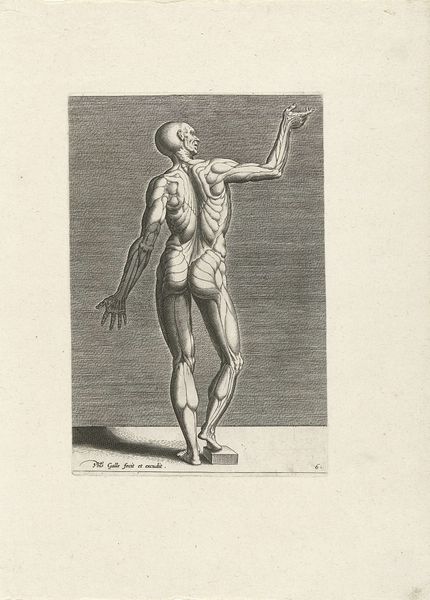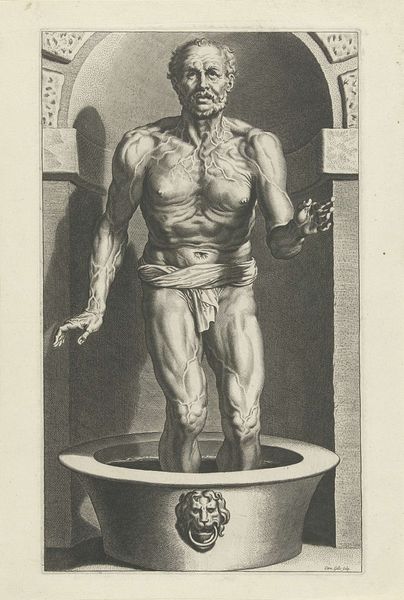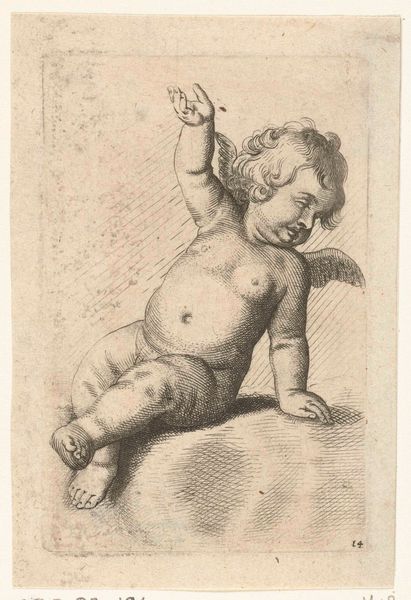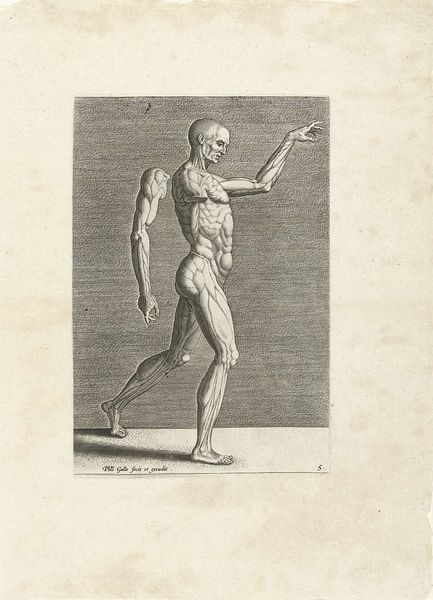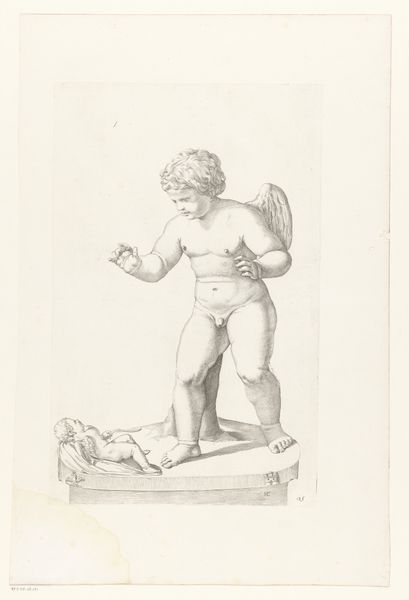
print, engraving
#
portrait
#
baroque
# print
#
figuration
#
history-painting
#
academic-art
#
nude
#
engraving
#
realism
Dimensions: width 276 mm, height 399 mm
Copyright: Rijks Museum: Open Domain
Curator: Immediately, I am struck by the vulnerability so exquisitely rendered. A complex subject, anatomically intriguing yet emotionally unsettling. Editor: Indeed. Let's delve into Pieter van Gunst’s “Anatomical Study of a Foetus,” created around 1685. This engraving, housed here at the Rijksmuseum, presents an unusual subject through a distinctly Baroque lens. Curator: Baroque, yes, in its detail, but it feels almost like a prefiguration of Romanticism’s fascination with the grotesque and sublime. The exposed viscera and pale skin against the neutral backdrop certainly evoke a powerful, almost visceral reaction. What kind of message could the artist convey by exposing such a delicate matter of fact? Editor: Anatomical displays such as this became more frequent during the period. During this period, medicine underwent massive innovation, particularly through dissections in both science and art. The image, even with the obvious visceral imagery on display, offers viewers in that time a new window into human reality. Curator: The imagery strikes me on a symbolic level. Look at the precise rendering of the internal organs suspended above the exposed torso. The symbols that denote science. In the grand scheme of artistic production that came before this image, artists were not privy to such delicate detail. It has quite the presence to me, considering its time of origin. Editor: You've highlighted something fascinating—it reflects the burgeoning power of the scientific method to be sure. And beyond, it reflects the intersection of scientific and religious perspectives. After all, the era witnessed many explorations into the meaning of existence, and the human form takes precedence here. Curator: Precisely! To contemplate its social reception back then and today reveals the enduring influence of the imagery. In any era, viewers must confront concepts such as the body, illness, and morality through the display of an opened up and studied form of a child that unfortunately could not experience those things. Editor: This really encapsulates the complex layers of meaning we often uncover in art: technical advancement, scientific method, emotional engagement...it's quite the picture when you piece it together. Curator: A memorable glimpse into history, captured within the lines of a fascinating etching.
Comments
No comments
Be the first to comment and join the conversation on the ultimate creative platform.

